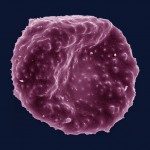Lien vers Pubmed [PMID] – 24206649
Malar. J. 2013 Nov;12:405
BACKGROUND: To achieve the goal of malaria elimination in low transmission areas such as in Cambodia, new, inexpensive, high-throughput diagnostic tools for identifying very low parasite densities in asymptomatic carriers are required. This will enable a switch from passive to active malaria case detection in the field.
METHODS: DNA extraction and real-time PCR assays were implemented in an “in-house” designed mobile laboratory allowing implementation of a robust, sensitive and rapid malaria diagnostic strategy in the field. This tool was employed in a survey organized in the context of the MalaResT project (NCT01663831).
RESULTS: The real-time PCR screening and species identification assays were performed in the mobile laboratory between October and November 2012, in Rattanakiri Province, to screen approximately 5,000 individuals in less than four weeks and treat parasite carriers within 24-48 hours after sample collection. An average of 240 clinical samples (and 40 quality control samples) was tested every day, six/seven days per week. Some 97.7% of the results were available <24 hours after the collection. A total of 4.9% were positive for malaria. Plasmodium vivax was present in 61.1% of the positive samples, Plasmodium falciparum in 45.9%, Plasmodium malariae in 7.0% and Plasmodium ovale in 2.0%.
CONCLUSIONS: The operational success of this diagnostic set-up proved that molecular testing and subsequent treatment is logistically achievable in field settings. This will allow the detection of clusters of asymptomatic carriers and to provide useful epidemiological information. Fast results will be of great help for staff in the field to track and treat asymptomatic parasitaemic cases. The concept of the mobile laboratory could be extended to other countries for the molecular detection of malaria or other pathogens, or to culture vivax parasites, which does not support long-time delay between sample collection and culture.

